According to PayAnalytics, as of June 2025 the U.S. still has no federal pay transparency law. Instead, job seekers are navigating a patchwork of state and city rules, some requiring pay ranges in postings, others only upon request.
These laws are meant to level the playing field, but in reality, the experience varies dramatically by zip code. For many workers, that means uncertainty: will they see the number upfront, or be left guessing about their worth?
What We Did
With that in mind, we analyzed 43,404 job postings across all 50 states to see how open employers are about pay as we go into 2026. We reviewed how many job listings include salary bandings and compared how this differs by state, industry or seniority level.
Key Findings
- Only 33.1% of all jobs in the U.S. disclose pay
- New York sets an example for salary transparency, with almost 3 in 4 (72.7%) jobs including salary
- Georgia was the state job seekers are least likely to see a salary included in a job ad
- Entry-level jobs are the least likely to be transparent about pay
- Pay transparency varies by industry and role
The National Picture: Only 33.1% of Jobs Expose Pay
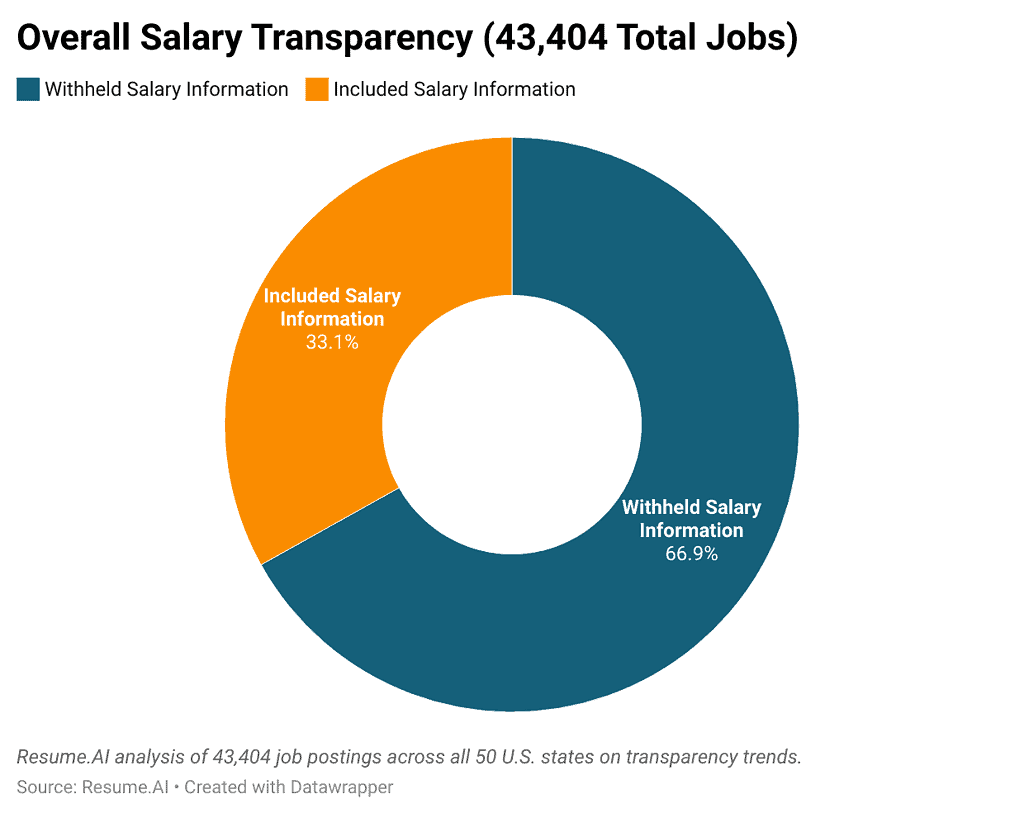
The results speak for themselves, salary transparency is far from standard practice. Just 33.1% of U.S. job postings include pay information, leaving two out of three job seekers (66.9%) in the dark. This lack of openness adds needless hurdles to the hiring process and erodes trust at a time when workers expect clarity and honesty from employers more than ever.
Geographic Divides: Pay Transparency Peaks in New York with 72.7%
Where you live can be just as important as your skills. New York leads the nation with 72.7% of job postings revealing pay, followed closely by California (63.6%), Illinois (60.9%), Maryland (57.1%), and Minnesota (57.0%). For job seekers, these numbers show that in several states, transparency is becoming the norm, giving workers a clearer view of their worth before they apply.
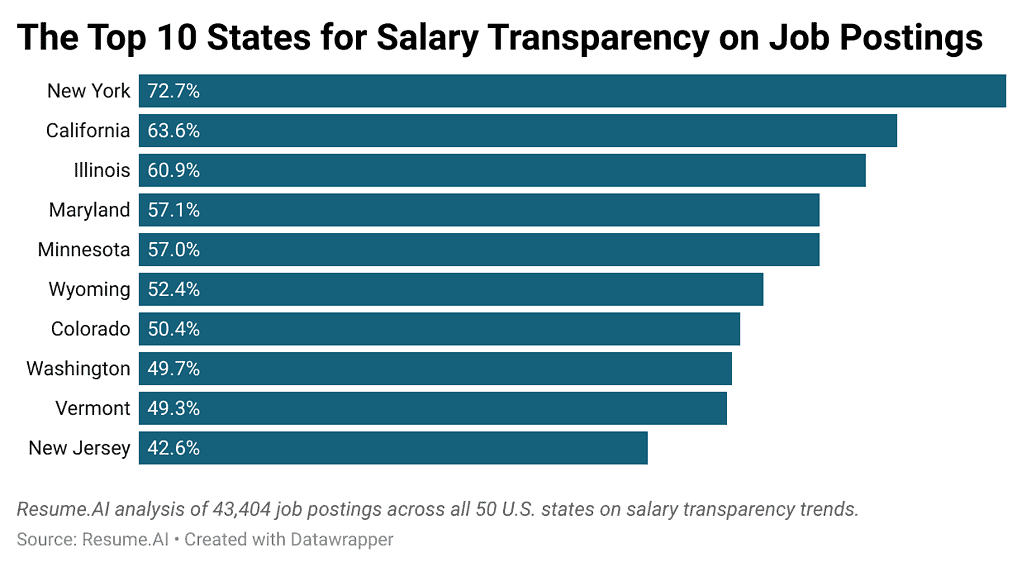
This divide isn’t random, it closely mirrors legislation. States like New York, California, Illinois, Maryland, Minnesota, and Washington have enacted laws requiring employers to include salary ranges in job postings, often alongside information about benefits and other compensation. These regulations were designed to combat pay gaps, promote fairness, and help job seekers make more informed decisions upfront. As a result, compliance with these laws has helped push transparency rates far above the national average of 33.1%.
States With the Lowest Pay Transparency: Georgia Ranks Last at 2.6%
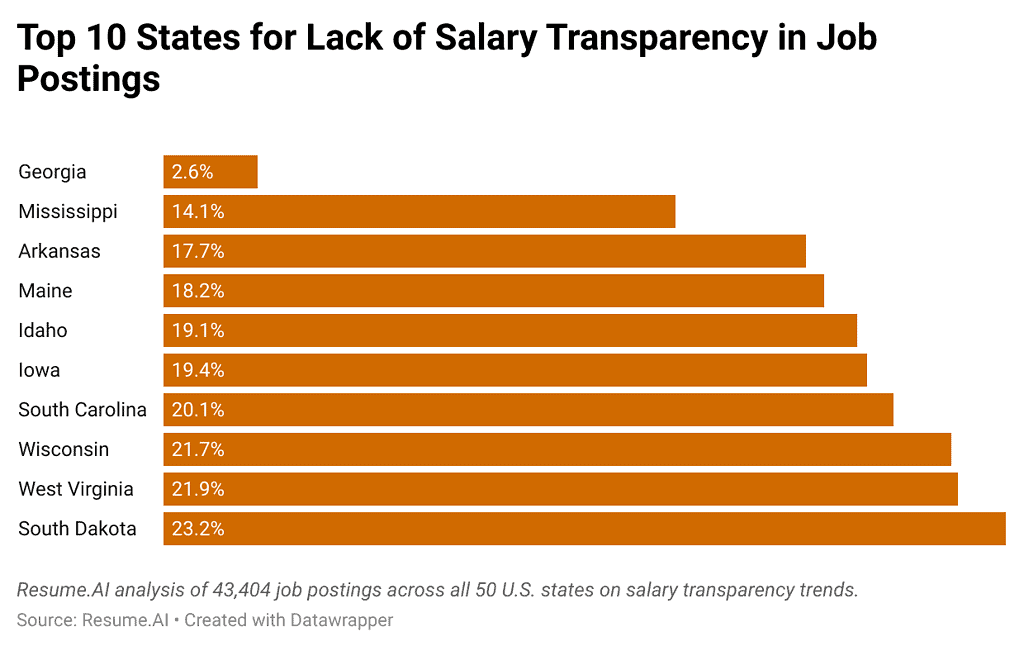
The gap is starkest at the bottom of the rankings. Georgia ranks last, with only 2.6% of job postings showing pay, followed by Mississippi (14.1%), Arkansas (17.7%), Maine (18.2%), and Idaho (19.1%). In these states, fewer than one in five jobs provide salary details, leaving job seekers with little clarity and underscoring how far behind they are compared to the national average of 33.1%.
States without pay transparency laws, such as Georgia, Mississippi, and Arkansas, consistently lag in disclosure, highlighting how strongly state-level policy influences whether candidates enter the hiring process with confidence or uncertainty.
Lack of Salary Info Wastes Job Seekers’ Time
For job seekers, this lack of transparency means entering application processes completely blind, investing hours into tailoring resumes, preparing for interviews, and waiting through multi-step hiring processes without any sense of whether the eventual offer will meet their needs. The average hiring process in the U.S. takes 4 to 6 weeks according to Indeed, making the absence of salary information not just inconvenient, but a significant waste of time and energy when pay doesn’t align with expectations.
From Entry-Level to Executive: How Pay Transparency Changes
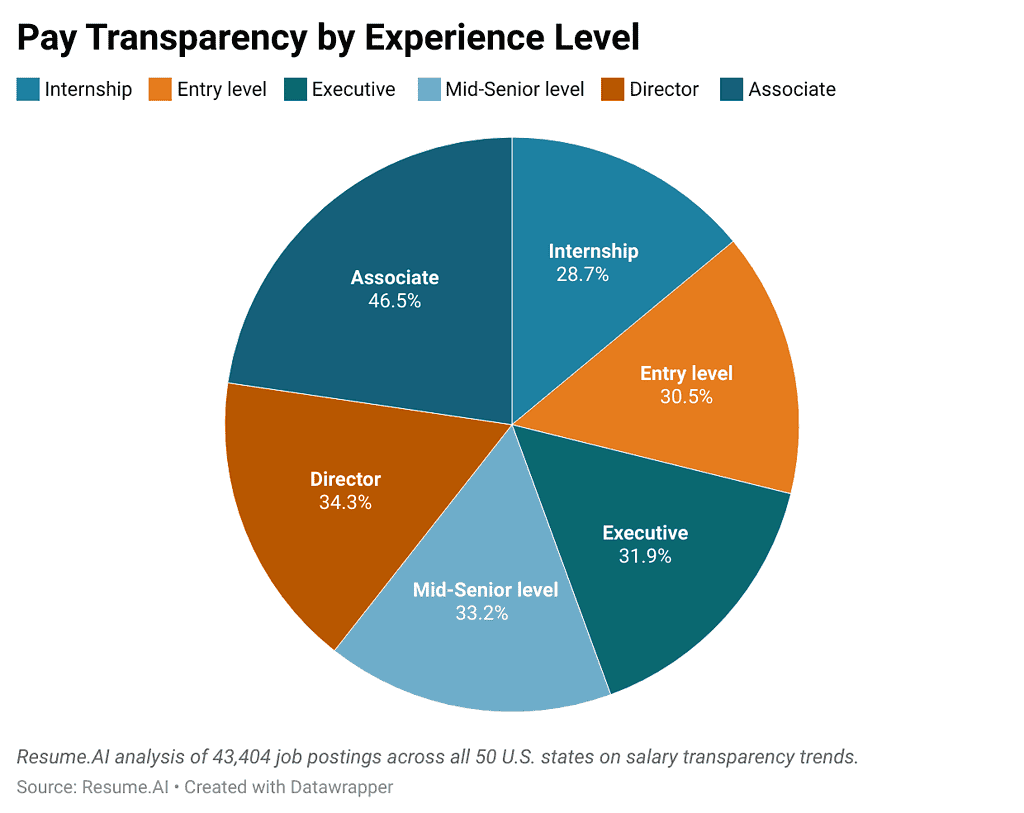
Access to pay information shifts with career stage. Associate-level jobs are the most transparent, with nearly half (46.5%) listing salaries, a boost for those making career moves. Senior roles such as directors and C-level executives fare slightly better, showing that as you move up the ladder, transparency tends to improve.
Only 3 in 10 Entry-Level Jobs Reveal Salaries
But for entry-level workers, the story is very different. 3 in 10 postings (30.5%) share pay details, leaving young professionals guessing about their value. The overall pattern is clear: the people who need transparency most at the start of their careers are the ones least likely to get it.
Where Pay Transparency Is Already the Norm
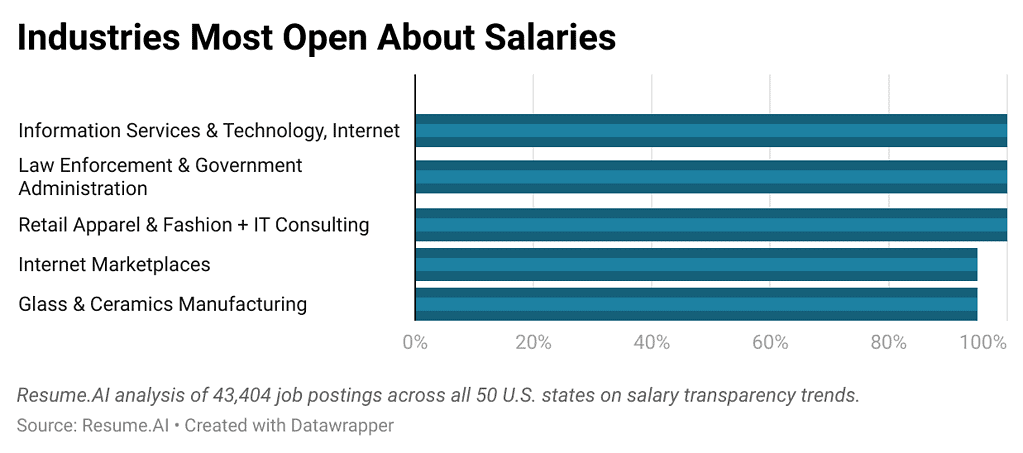
At the top of the ladder, industries like Information Services, Technology, Internet, and even Retail Apparel and Fashion with IT Consulting disclosed pay in every posting, demonstrating that for certain sectors, openness about pay is already expected.
Industries With the Lowest Pay Transparency Rates
On LinkedIn, some industries show virtually no pay transparency at all. In our analysis, not a single posting in Automotive, Energy & Utilities included salary details, while Leisure & Tourism disclosed pay only 2% of the time. Farming followed at 3%, Core Law Enforcement at 4%, and Medical Practices & Hospitals also at 4%. For job seekers in these fields, the lack of salary information means applying without any insight into compensation, making an already uncertain process even more frustrating.
Beyond these extremes, many other industries fell somewhere in between. For instance, some parts of manufacturing are shifting toward greater openness, while service-based sectors often remain patchy. But the big picture is clear: your industry can determine whether you walk into an application process with confidence or uncertainty.
The Work You Do Shapes the Transparency You Get
The divide is clear when you look at job titles. Customer-facing and compliance roles almost always disclose pay, giving candidates a fair view of what to expect before applying.
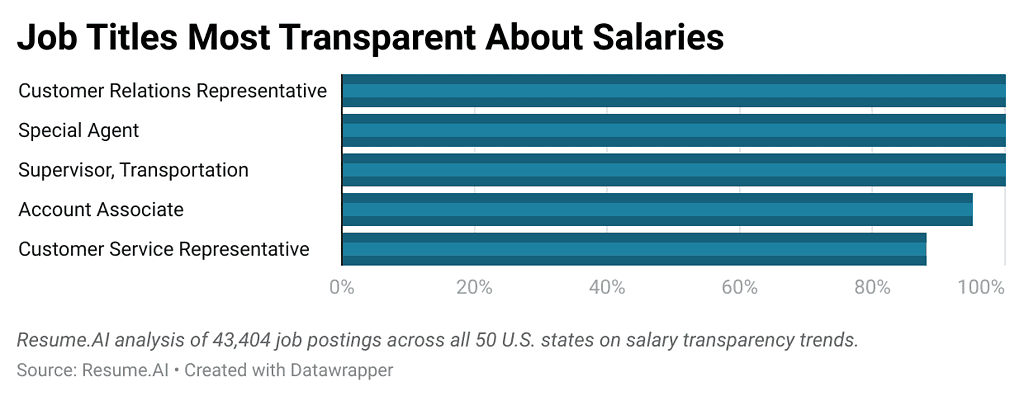
Healthcare and defense, essential fields society relies on, rarely share salary information, leaving many workers in the dark about their value. By contrast, roles like analysts, consultants, and managers fall somewhere in between, with openness varying widely and transparency still far from guaranteed.
What Could Change Look Like?
If every state matched New York’s lead, 17,195 more postings would disclose salaries, nearly doubling openness overnight. Federal action could level the playing field, while forward-thinking employers would gain an edge by building trust and fairness into their brand.
For workers, especially women and minorities, this shift could mean narrower pay gaps and greater confidence in their value. With younger generations demanding clarity and platforms rewarding transparent listings, the momentum is already building toward a future where guessing games around pay are finally over.
Building the Future of Transparent Hiring
This research makes it clear that access to salary information should not depend on state , job title, or industry. By equipping job seekers with tools to identify transparent employers and encouraging organizations to lead with openness, we can help build a labor market that is equitable, fair, and future-ready.
And for job seekers ready to take the next step, tailoring your resume is just as important as finding transparent opportunities. Learn how to customize your resume for every application to stand out, save time, and maximize your chances of landing the right role.
Methodology
Resume.ai analyzed 43,404 job postings from all 50 U.S. states in September 2025. Each posting was flagged as either disclosing or hiding salary information, with further analysis by job title, industry, location, and career level. This large, representative sample provides a clear snapshot of salary transparency trends nationwide.
Data recorded: September 2025




